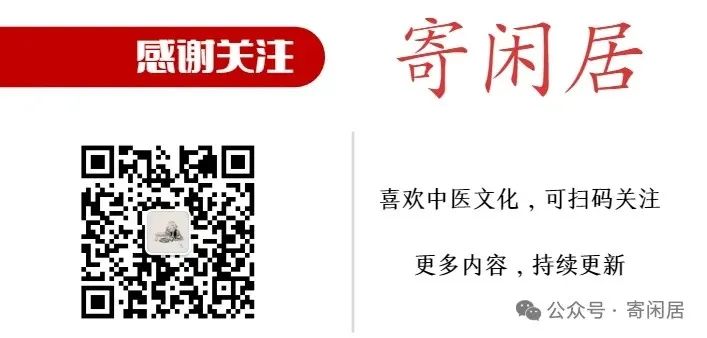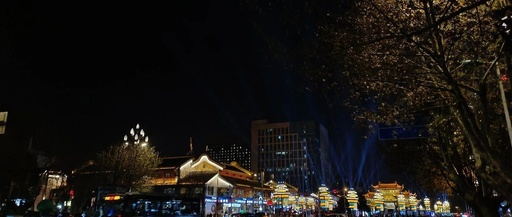Starting today, I will share clinical case studies. The protagonist of today’s case is a 28-year-old young woman who usually experiences a sticky sensation in her mouth, accompanied by halitosis. Recently, she developed papules on her face with accompanying itching discomfort. After the onset of her condition, she visited a certain hospital, where she was diagnosed with facial dermatitis and given the following treatment:
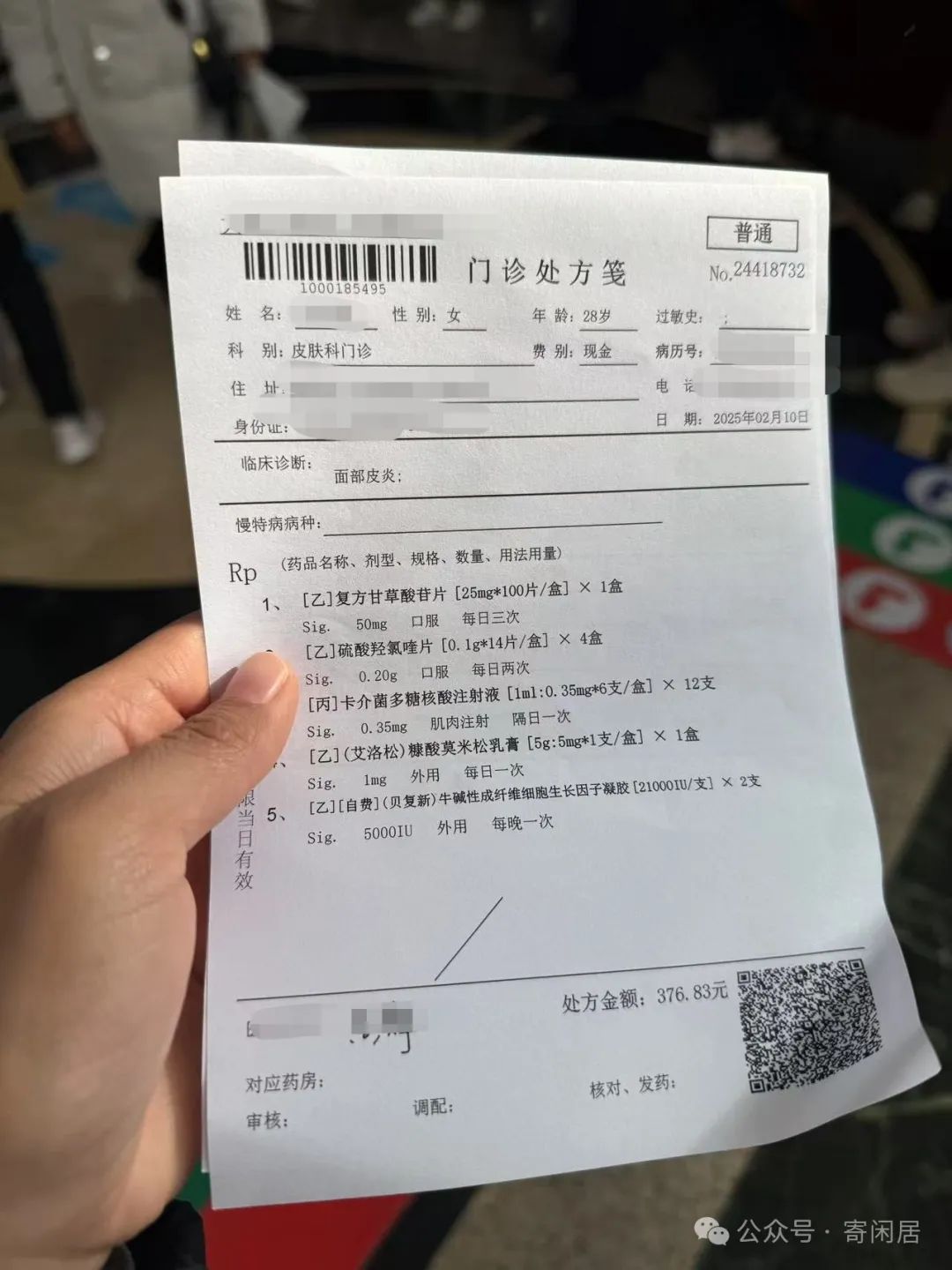 Clearly, this treatment had no effect, and the patient continued to suffer from the rash. Later, she sought my help for diagnosis and treatment. Below is her appearance during the initial consultation. There were no abnormalities in her diet, sleep, or bowel movements, but her urine was yellow.
Clearly, this treatment had no effect, and the patient continued to suffer from the rash. Later, she sought my help for diagnosis and treatment. Below is her appearance during the initial consultation. There were no abnormalities in her diet, sleep, or bowel movements, but her urine was yellow.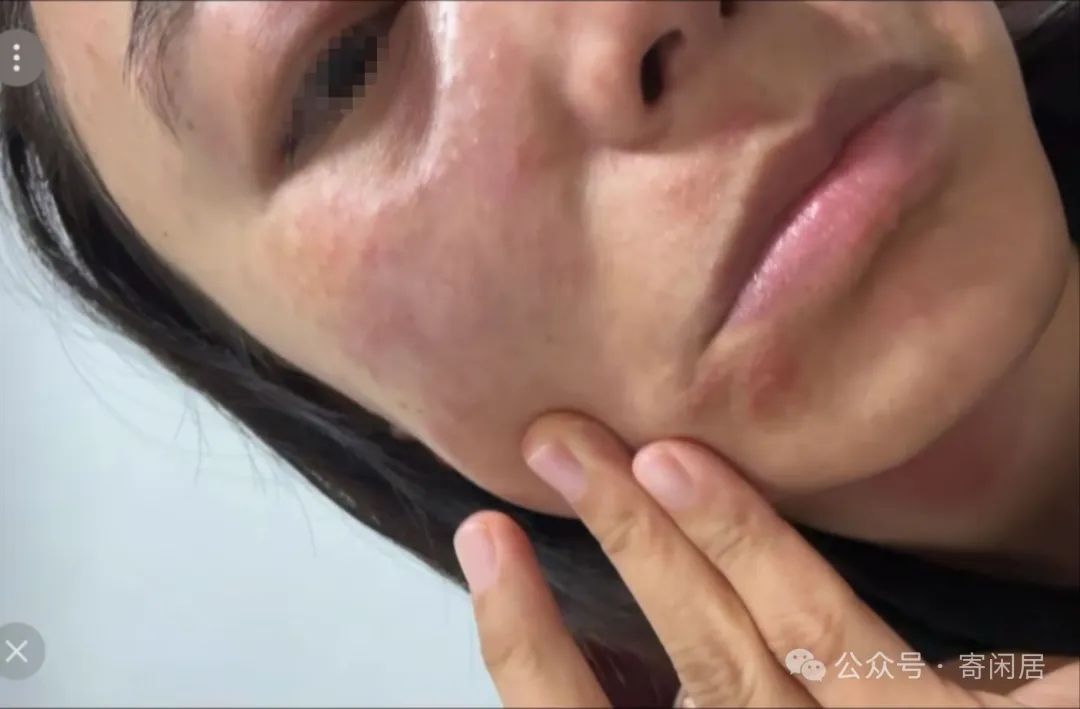 First Diagnosis Prescription: Bai Zhu (White Atractylodes) 15g, Fu Ling (Poria) 15g, Zhi Gan Cao (Honey-fried Licorice) 9g, Dang Shen (Codonopsis) 10g, Sheng Jiang (Fresh Ginger) 15g, Huang Qin (Scutellaria) 6g, Huang Lian (Coptis) 3g, Mu Dan Pi (Moutan) 6g,Sheng Di Huang (Rehmannia) 30g, Sheng Jizhu (Tribulus) 12g, Fang Feng (Siler) 6g, Dou Kou (Cardamom) 6g,Da Zao (Jujube) 15g, Dang Gui (Angelica) 12g (5 doses) During the second consultation, most of the facial papules had subsided, and the halitosis symptoms had also improved significantly. The appearance is as follows:
First Diagnosis Prescription: Bai Zhu (White Atractylodes) 15g, Fu Ling (Poria) 15g, Zhi Gan Cao (Honey-fried Licorice) 9g, Dang Shen (Codonopsis) 10g, Sheng Jiang (Fresh Ginger) 15g, Huang Qin (Scutellaria) 6g, Huang Lian (Coptis) 3g, Mu Dan Pi (Moutan) 6g,Sheng Di Huang (Rehmannia) 30g, Sheng Jizhu (Tribulus) 12g, Fang Feng (Siler) 6g, Dou Kou (Cardamom) 6g,Da Zao (Jujube) 15g, Dang Gui (Angelica) 12g (5 doses) During the second consultation, most of the facial papules had subsided, and the halitosis symptoms had also improved significantly. The appearance is as follows: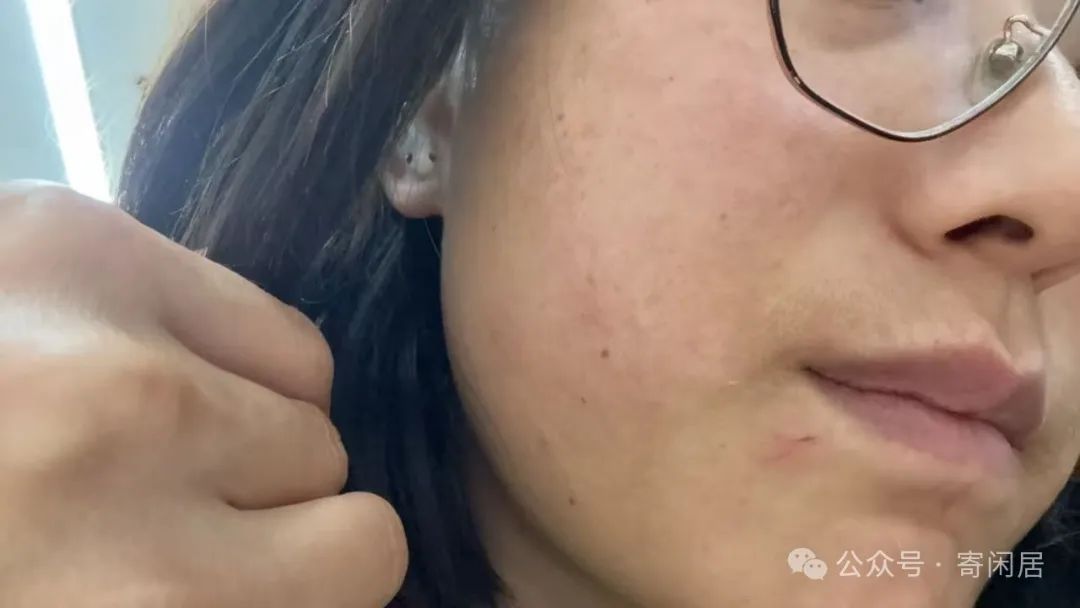
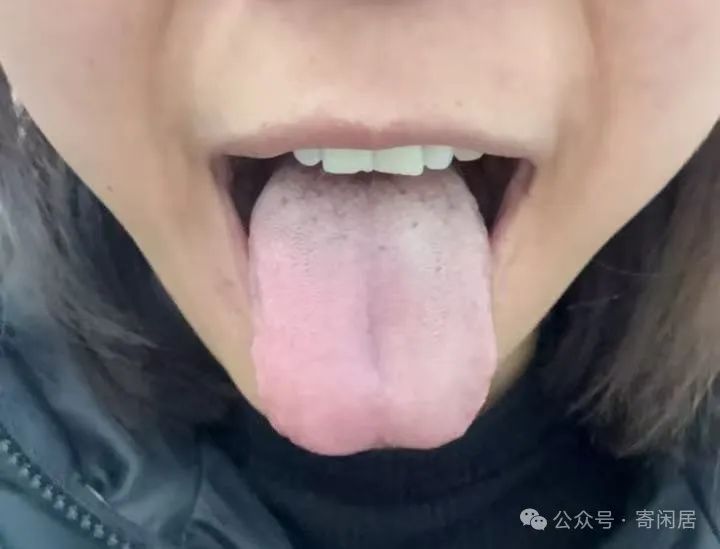 The prescription for the second diagnosis remained unchanged, except that the dosage of Huang Lian (Coptis) was increased to 5g. By the third diagnosis, the patient had fully recovered.
The prescription for the second diagnosis remained unchanged, except that the dosage of Huang Lian (Coptis) was increased to 5g. By the third diagnosis, the patient had fully recovered.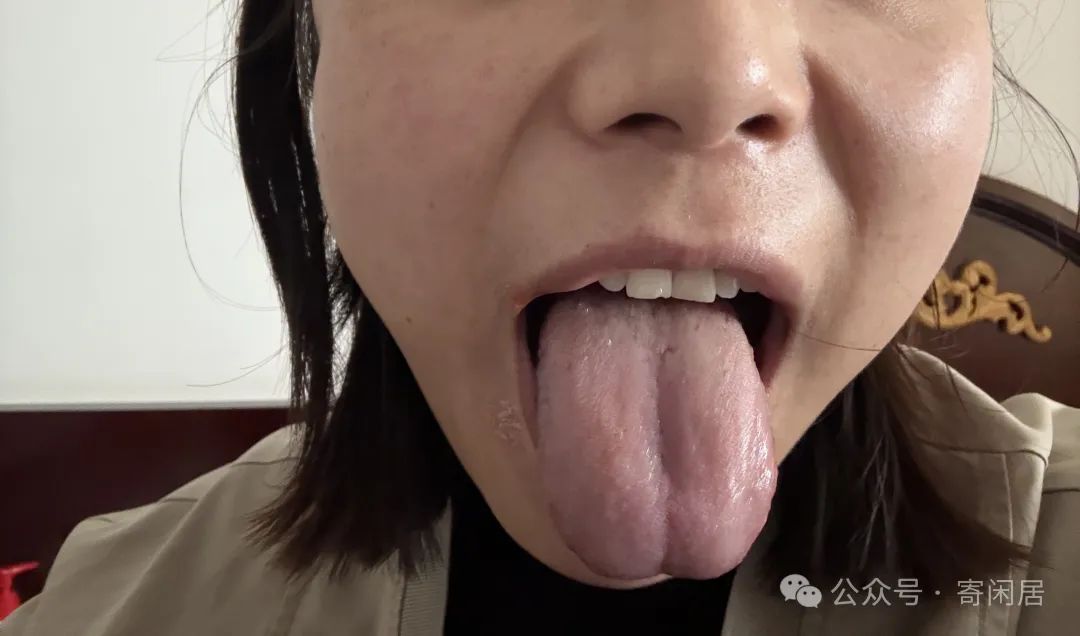 Regarding skin issues, many practitioners tend to prescribe hormonal medications to relieve itching. What is the mechanism behind this? We previously discussed that the role of hormones is to extract vital energy. Using these hormonal medications elevates the vital energy within the skin to combat itching. However, prolonged use can lead to skin hyperactivity and an increased risk of skin cancer. The root cause of skin diseases lies in the insufficient transformation of the spleen, followed by inadequate fluid in the intestines, phlegm and turbid substances obstructing the meridians in the lungs, and insufficient liver qi elevation. These are several key areas in treating skin diseases. Therefore, looking back at this patient, her halitosis and sticky mouth are manifestations of dampness in the body. Thus, the first step is to eliminate dampness. I often use Er Chen Tang (Two Aged Decoction) for this purpose, to which I added Dou Kou (Cardamom). Next, it is essential to strengthen the spleen’s transformation function, using formulas like Li Zhong Tang (Regulate the Middle Decoction) and Huang Ya Tang (Huang Ya Decoction). Regardless of whether the skin is dry or wet, the underlying cause must be spleen dampness and intestinal dryness. A key aspect of treatment is to invigorate the spleen and moisten the intestines. For this, I often use Sheng Di Huang (Rehmannia), which is rich in fluids, can moisten the intestines, cool the blood, and tonify kidney qi. This way, it can transport vital energy to the spleen and return to the lungs. Sufficient lung qi can then circulate the moisture and heat out of the skin. Therefore, Sheng Di Huang can also be used for eczema. Many people doubt this, thinking that since it is already eczema, why use the moistening Sheng Di Huang? The reasoning is here, but it is crucial to ensure the spleen’s transformation function is maintained, and the dosage of Sheng Di Huang should be large. When treating eczema or tremors, I often use large doses of Sheng Di Huang, sometimes up to 120g. As long as the diagnosis is accurate, it is not uncommon to use half a pound of this herb. The third step is to eliminate phlegm and turbid substances from the lungs. The degree of phlegm turbidity should be assessed; if it is not severe, steps one and two can be combined. If necessary, Bai Jie Zi (White Mustard Seed) and Chen Pi (Aged Tangerine Peel) can be added to eliminate phlegm and turbidity. For dampness, I used Fu Ling (Poria), Bai Zhu (White Atractylodes), and Sheng Jiang (Fresh Ginger). The lungs govern the hundred vessels and transport vital energy to the skin. A key point in this process is the elevation of liver qi. I used Dang Gui (Angelica) to both elevate liver qi and nourish the blood, allowing it to return to the vessels. Finally, regarding external symptoms, some are due to damp-heat, while others are due to dryness-heat. The most important aspect of treating external symptoms is to open the exterior qi. We can use Jing Jie (Schizonepeta), Fang Feng (Siler), Gui Zhi (Cinnamon Twig), Ma Huang (Ephedra), and Chan Tui (Cicada Slough) to open the exterior qi, allowing the pathogens to exit. For example, in the Jin Gui Yao Lue (Essentials from the Golden Cabinet), there is a formula of Ma Huang and Bai Zhu Tang to treat wind-dampness on the exterior, which uses Ma Huang to open the exterior qi. Can this patient use it? Yes, but I did not use it; it was simply not on my mind at the time. While opening the exterior qi, it is essential to observe the condition of the skin lesions. Some may have heat toxins scorching, some may be dry and peeling, while others may have damp-heat. For those with heat toxins, we need to clear heat and detoxify, using herbs like Lian Qiao (Forsythia), Yin Hua (Honeysuckle), and Huang Lian (Coptis). Huang Lian is an excellent herb that can detoxify the blood. Does this provide us with a treatment approach for uremia? Huang Lian can also be combined with Bai Zhu for external application to treat damp-heat skin lesions, which is a very good formula. Huang Qin (Scutellaria) can clear heat from the three jiao and restrain fire. I also added Dan Pi (Moutan) to clear heat and cool the blood. In fact, Dan Pi is also very effective in dispelling blood stasis and can even whiten the skin. Interestingly, Dan Pi is often used in high-end whitening products that are then sold back to us, profiting from our money. Dan Pi, when used, can make the complexion rosy and vibrant. The term ‘Dan’ means red, and treating the skin with the same substance is a principle of similarity. For dryness of the epidermis, the root cause still lies in intestinal dryness. Therefore, treating intestinal dryness is essential, and at most, we can use some external medications, such as Qing Ci Guo You (Green Thorn Fruit Oil), which I have found to be very effective for external use. Additionally, skin diseases often involve itching, which is caused by damp-heat toxins. We also need to add some anti-itching herbs, such as Bai Jizhu (Tribulus), which is very effective for itching in skin diseases. Although I titled this case study “Damp-Heat Accumulation Causing Skin Rash,” the fundamental issue is due to internal dampness. The dampness in the skin cannot be transformed, leading to stagnation and heat, resulting in sores. The spleen governs the muscles, and the lungs govern the skin. Our body requires a certain level of moisture to maintain hydration, known as the body’s natural moisture. This moisture relies on continuous circulation of fluids; once it stops circulating, it becomes phlegm and turbid substances. The spleen’s role in transformation is to regulate the moisture and qi. If it fails to do so, moisture will accumulate in various parts of the body. The lungs govern the skin, and if the lung qi is insufficient, moisture will also accumulate in the skin. All that is perceived as allergies is actually due to insufficient lung qi; so-called allergens are merely a facade. There has never been a true allergen; it is simply that one is too weak. This is why cesarean-born babies are prone to allergies, as they have not experienced the earth’s qi through the vaginal canal, thus failing to connect with the heavenly qi. The lungs and large intestine are interrelated; the fluids in the lungs and large intestine communicate with each other. The qi of the large intestine must circulate into the lungs, which is a mutual relationship. The so-called qi of the large intestine is not what one might think; qi is water, and water is qi. Sufficient lung qi can circulate the moisture within the skin. It is not correct to assume that seeing dryness on the surface means one should nourish yin; the dryness of the surface originates from dampness in the spleen, while the moisture on the surface comes from dryness in the intestines. This is the principle of proper treatment. The above case study is a record of my clinical experience. However, human constitution varies, and diseases differ greatly. The formulas and herbs mentioned in this case should not be used without proper diagnosis to avoid missteps.
Regarding skin issues, many practitioners tend to prescribe hormonal medications to relieve itching. What is the mechanism behind this? We previously discussed that the role of hormones is to extract vital energy. Using these hormonal medications elevates the vital energy within the skin to combat itching. However, prolonged use can lead to skin hyperactivity and an increased risk of skin cancer. The root cause of skin diseases lies in the insufficient transformation of the spleen, followed by inadequate fluid in the intestines, phlegm and turbid substances obstructing the meridians in the lungs, and insufficient liver qi elevation. These are several key areas in treating skin diseases. Therefore, looking back at this patient, her halitosis and sticky mouth are manifestations of dampness in the body. Thus, the first step is to eliminate dampness. I often use Er Chen Tang (Two Aged Decoction) for this purpose, to which I added Dou Kou (Cardamom). Next, it is essential to strengthen the spleen’s transformation function, using formulas like Li Zhong Tang (Regulate the Middle Decoction) and Huang Ya Tang (Huang Ya Decoction). Regardless of whether the skin is dry or wet, the underlying cause must be spleen dampness and intestinal dryness. A key aspect of treatment is to invigorate the spleen and moisten the intestines. For this, I often use Sheng Di Huang (Rehmannia), which is rich in fluids, can moisten the intestines, cool the blood, and tonify kidney qi. This way, it can transport vital energy to the spleen and return to the lungs. Sufficient lung qi can then circulate the moisture and heat out of the skin. Therefore, Sheng Di Huang can also be used for eczema. Many people doubt this, thinking that since it is already eczema, why use the moistening Sheng Di Huang? The reasoning is here, but it is crucial to ensure the spleen’s transformation function is maintained, and the dosage of Sheng Di Huang should be large. When treating eczema or tremors, I often use large doses of Sheng Di Huang, sometimes up to 120g. As long as the diagnosis is accurate, it is not uncommon to use half a pound of this herb. The third step is to eliminate phlegm and turbid substances from the lungs. The degree of phlegm turbidity should be assessed; if it is not severe, steps one and two can be combined. If necessary, Bai Jie Zi (White Mustard Seed) and Chen Pi (Aged Tangerine Peel) can be added to eliminate phlegm and turbidity. For dampness, I used Fu Ling (Poria), Bai Zhu (White Atractylodes), and Sheng Jiang (Fresh Ginger). The lungs govern the hundred vessels and transport vital energy to the skin. A key point in this process is the elevation of liver qi. I used Dang Gui (Angelica) to both elevate liver qi and nourish the blood, allowing it to return to the vessels. Finally, regarding external symptoms, some are due to damp-heat, while others are due to dryness-heat. The most important aspect of treating external symptoms is to open the exterior qi. We can use Jing Jie (Schizonepeta), Fang Feng (Siler), Gui Zhi (Cinnamon Twig), Ma Huang (Ephedra), and Chan Tui (Cicada Slough) to open the exterior qi, allowing the pathogens to exit. For example, in the Jin Gui Yao Lue (Essentials from the Golden Cabinet), there is a formula of Ma Huang and Bai Zhu Tang to treat wind-dampness on the exterior, which uses Ma Huang to open the exterior qi. Can this patient use it? Yes, but I did not use it; it was simply not on my mind at the time. While opening the exterior qi, it is essential to observe the condition of the skin lesions. Some may have heat toxins scorching, some may be dry and peeling, while others may have damp-heat. For those with heat toxins, we need to clear heat and detoxify, using herbs like Lian Qiao (Forsythia), Yin Hua (Honeysuckle), and Huang Lian (Coptis). Huang Lian is an excellent herb that can detoxify the blood. Does this provide us with a treatment approach for uremia? Huang Lian can also be combined with Bai Zhu for external application to treat damp-heat skin lesions, which is a very good formula. Huang Qin (Scutellaria) can clear heat from the three jiao and restrain fire. I also added Dan Pi (Moutan) to clear heat and cool the blood. In fact, Dan Pi is also very effective in dispelling blood stasis and can even whiten the skin. Interestingly, Dan Pi is often used in high-end whitening products that are then sold back to us, profiting from our money. Dan Pi, when used, can make the complexion rosy and vibrant. The term ‘Dan’ means red, and treating the skin with the same substance is a principle of similarity. For dryness of the epidermis, the root cause still lies in intestinal dryness. Therefore, treating intestinal dryness is essential, and at most, we can use some external medications, such as Qing Ci Guo You (Green Thorn Fruit Oil), which I have found to be very effective for external use. Additionally, skin diseases often involve itching, which is caused by damp-heat toxins. We also need to add some anti-itching herbs, such as Bai Jizhu (Tribulus), which is very effective for itching in skin diseases. Although I titled this case study “Damp-Heat Accumulation Causing Skin Rash,” the fundamental issue is due to internal dampness. The dampness in the skin cannot be transformed, leading to stagnation and heat, resulting in sores. The spleen governs the muscles, and the lungs govern the skin. Our body requires a certain level of moisture to maintain hydration, known as the body’s natural moisture. This moisture relies on continuous circulation of fluids; once it stops circulating, it becomes phlegm and turbid substances. The spleen’s role in transformation is to regulate the moisture and qi. If it fails to do so, moisture will accumulate in various parts of the body. The lungs govern the skin, and if the lung qi is insufficient, moisture will also accumulate in the skin. All that is perceived as allergies is actually due to insufficient lung qi; so-called allergens are merely a facade. There has never been a true allergen; it is simply that one is too weak. This is why cesarean-born babies are prone to allergies, as they have not experienced the earth’s qi through the vaginal canal, thus failing to connect with the heavenly qi. The lungs and large intestine are interrelated; the fluids in the lungs and large intestine communicate with each other. The qi of the large intestine must circulate into the lungs, which is a mutual relationship. The so-called qi of the large intestine is not what one might think; qi is water, and water is qi. Sufficient lung qi can circulate the moisture within the skin. It is not correct to assume that seeing dryness on the surface means one should nourish yin; the dryness of the surface originates from dampness in the spleen, while the moisture on the surface comes from dryness in the intestines. This is the principle of proper treatment. The above case study is a record of my clinical experience. However, human constitution varies, and diseases differ greatly. The formulas and herbs mentioned in this case should not be used without proper diagnosis to avoid missteps.
